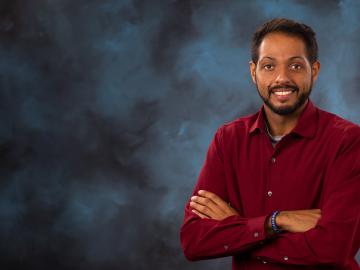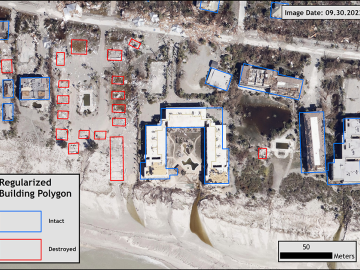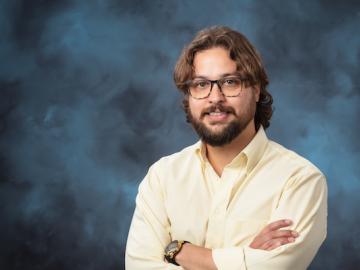
Filter News
Area of Research
- (-) Materials (104)
- (-) Materials for Computing (11)
- (-) National Security (33)
- Advanced Manufacturing (22)
- Biological Systems (1)
- Biology and Environment (44)
- Building Technologies (1)
- Computational Biology (2)
- Computational Engineering (2)
- Computer Science (8)
- Electricity and Smart Grid (3)
- Energy Science (212)
- Energy Sciences (1)
- Functional Materials for Energy (2)
- Fusion and Fission (11)
- Fusion Energy (2)
- Isotope Development and Production (1)
- Isotopes (29)
- Neutron Science (47)
- Nuclear Science and Technology (14)
- Quantum information Science (1)
- Sensors and Controls (2)
- Supercomputing (84)
- Transportation Systems (2)
News Topics
- (-) 3-D Printing/Advanced Manufacturing (29)
- (-) Biomedical (10)
- (-) Energy Storage (39)
- (-) Grid (11)
- (-) Isotopes (14)
- (-) Machine Learning (16)
- (-) Physics (28)
- (-) Security (12)
- (-) Space Exploration (3)
- (-) Summit (5)
- (-) Transportation (21)
- Advanced Reactors (5)
- Artificial Intelligence (21)
- Big Data (7)
- Bioenergy (14)
- Biology (8)
- Biotechnology (1)
- Buildings (6)
- Chemical Sciences (36)
- Clean Water (3)
- Composites (10)
- Computer Science (39)
- Coronavirus (9)
- Critical Materials (13)
- Cybersecurity (21)
- Environment (21)
- Exascale Computing (2)
- Frontier (3)
- Fusion (8)
- High-Performance Computing (8)
- Irradiation (1)
- ITER (1)
- Materials (84)
- Materials Science (93)
- Mathematics (1)
- Microscopy (31)
- Molten Salt (3)
- Nanotechnology (46)
- National Security (36)
- Neutron Science (40)
- Nuclear Energy (21)
- Partnerships (15)
- Polymers (23)
- Quantum Computing (4)
- Quantum Science (15)
- Simulation (2)
Media Contacts

Nine student physicists and engineers from the #1-ranked Nuclear Engineering and Radiological Sciences Program at the University of Michigan, or UM, attended a scintillation detector workshop at Oak Ridge National Laboratory Oct. 10-13.

Having lived on three continents spanning the world’s four hemispheres, Philipe Ambrozio Dias understands the difficulties of moving to a new place.

Over the past seven years, researchers in ORNL’s Geospatial Science and Human Security Division have mapped and characterized all structures within the United States and its territories to aid FEMA in its response to disasters. This dataset provides a consistent, nationwide accounting of the buildings where people reside and work.

Sheng Dai, a Corporate Fellow and section head at the Department of Energy’s Oak Ridge National Laboratory, has been selected by the DOE Office of Science as a 2023 Distinguished Scientist Fellow.

Marc-Antoni Racing has licensed a collection of patented energy storage technologies developed at ORNL. The technologies focus on components that enable fast-charging, energy-dense batteries for electric and hybrid vehicles and grid storage.

Oak Ridge National Laboratory scientists recently demonstrated a low-temperature, safe route to purifying molten chloride salts that minimizes their ability to corrode metals. This method could make the salts useful for storing energy generated from the sun’s heat.

In human security research, Thomaz Carvalhaes says, there are typically two perspectives: technocentric and human centric. Rather than pick just one for his work, Carvalhaes uses data from both perspectives to understand how technology impacts the lives of people.

Researchers at ORNL and the University of Tennessee, Knoxville, discovered a key material needed for fast-charging lithium-ion batteries. The commercially relevant approach opens a potential pathway to improve charging speeds for electric vehicles.

Researchers at ORNL explored radium’s chemistry to advance cancer treatments using ionizing radiation.

ORNL has been selected to lead an Energy Frontier Research Center, or EFRC, focused on polymer electrolytes for next-generation energy storage devices such as fuel cells and solid-state electric vehicle batteries.


